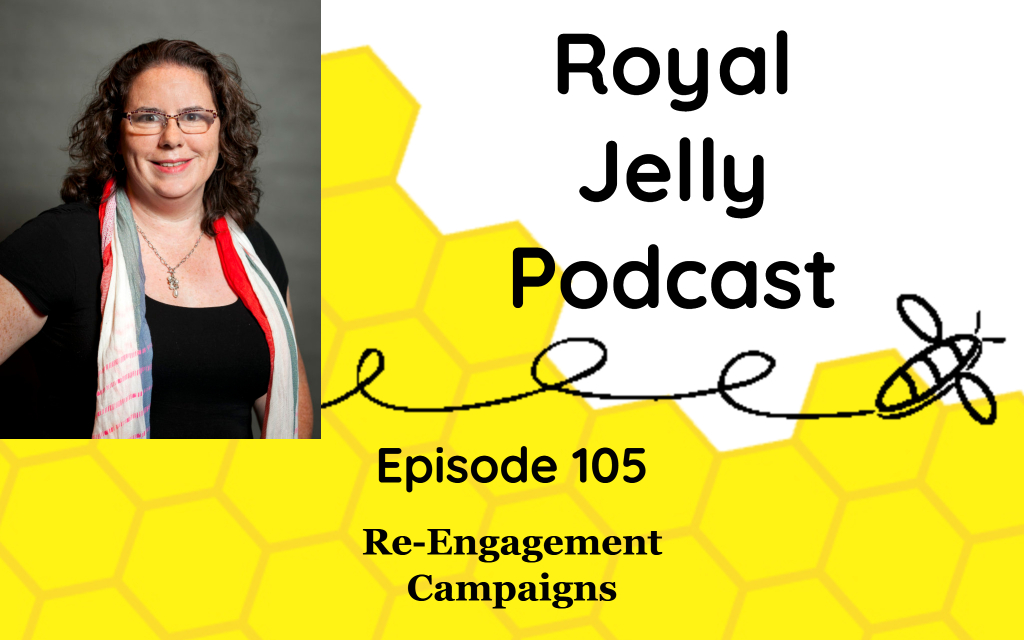Why You Need a Re-engagement Campaign
Today we are going to talk about the re-engagement campaign. The purpose is to get email subscribers who have not been opening your emails to open them and engage with them. The ultimate goal will be to remove your inactive subscribers from your email list since you usually pay your email solution provider based on the size of your list. We need to run a re-engagement campaign to get subscribers to start opening or clean them off your list. Now some of my clients have email lists in the five and six figures which turns into a significant amount of money if we’re paying for people on the list that are not opening emails.
If you decide you don’t want to delete people off your list, in the hopes they will someday, open your emails that is completely up to you, but you should still run a re-engagement campaign because we always want more opens and a more engaged list.
Pull Inactive Subscribers
The first step is to pull a segment of your list that has not opened your last 4, 6, 8, or 10 emails. It really depends on how often you send your emails when deciding on the parameters for who is not engaged. If you send quite often, then you want to identify anyone who has not opened in the last couple of months. If you send occasionally, then maybe it’s anyone in the last six months to a year. Once you decide, you need to pull that segment of your list into a new list in your email solution provider. When these subscribers are in the re-engagement campaign, they are not receiving your regular email communications.
Let me say that again, when these subscribers are in the re-engagement campaign, they are not receiving your regular email communications.
What Do I Say?
Remember the goal of this campaign is to get people to open and engage. That means clicking on something. I advise my clients to offer the juiciest piece of content that they have and are willing to give away. If you have different segments or different product or service lines, you want to keep that in mind. You can run re-engagement campaigns by segments of your list or you can choose to have a couple of different content offers within one campaign. You want to hit those different products or services in this email campaign to make sure you’re connecting with interested people. You want to offer your juiciest piece of content and make your subject line and your preheader text, which is the second subject line, are very enticing. We don’t want to make it look like clickbait, but it should make your audience want to open the email. Offer them a download or video training. The key is to get the unengaged subscriber to open and click.
Follow-Up Emails
After 3, 4, or 5 days, send an email to the segment of the list that did not open the first email to remind them about the juicy content you are offering. If you are offering 2 pieces of content, then the 3rd email will be the reminder.
Finally, after a few days, your last email will say, “We’re sorry to see you go. But it seems like you’re no longer interested in our content. We’re going to remove you from our list. You can re-subscribe at any time by clicking here or by visiting our website.” The option to resubscribe by clicking in the email will reach the people who do open that final email to let you know they want to stay on your list.
Removing Unengaged Subscribers
The last step might be painful. This is where we remove all the unengaged subscribers from your list and save money. I would download the list to an Excel spreadsheet just in case before you remove them. It will be hard to remove them but think of the money you will save and, to be honest, these people are not opening your emails anyway. Then what you will see is the number of people you’re sending to with your normal email campaigns has now gone down, but your open rates are going to go through the roof because you are only sending to people who want to hear from you.
My Re-engagement Campaign
That is the re-engagement campaign. As with most marketing strategies, there are a lot of factors: how many emails to send, how much time in between, etc. I’ve given you some guidelines, but everything is really related to how often you’re emailing your list and what is your relationship with that list. If you have two distinct juicy pieces of content, include them both in your campaign. For my re-engagement campaign, there is a social media piece of content because I have a lot of people come to me for help with social media and there’s also an email marketing piece of content because a lot of other people come to me for email marketing advice. My campaign hits both of those two big buckets of people of interest on my list. I hope you found this information useful, and I hope it will encourage you to step up your email marketing with a re-engagement campaign.

